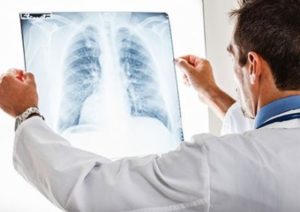Home » Small Cell Lung Cancer, SCLC
Small Cell Lung Cancer, SCLC
 About Small Cell Lung Cancer, SCLC
About Small Cell Lung Cancer, SCLC
Small Cell Lung Cancer cancer develops in the lungs for many years. It is a leading cause in death by cancer in the US, Western countries.
The lungs are a double respiratory organ with a sponge-like texture and shaped like a cone in the chest. The lungs provide the body with oxygen and remove carbon dioxide from the body in the process of breathing.
For most patients with stage 4 metastatic Small Cell Lung Cancer cancer, current treatments are insufficiently effective. This gives rise to the need for innovative strategies with greater efficacy in fighting the disease. The National Cancer Institute, NCI, highlights the fact that for a certain group of lung cancer patients, the best treatment option is to join one of the many clinical trials existing worldwide aiming to increase their chances of therapeutic success.
Types of Lung Cancer
We distinguish between two major types of lung cancer, when the distinction is based on the way the cells look under the microscope:
Non Small Cell Lung Cancer – NSCLC
This is the most common cancer and constitutes about 85% of lung cancers.
The disease develops in the lung tissue cells and a tight connection was found with smoking habits and history.
A persistent cough and shortness of breath are typical to patients with this disease and if a suspicion of cancer rises, the patient will undergo a biopsy.
The patients are classified by disease subtypes. In most cases of the disease, recovery is uncertain.
Small Cell Lung Cancer – SCLC
This cancer constitutes approx. 15% of lung cancers and is considered to be particularly aggressive.
Its source is in cells from the central region of the lung and connection was found with smoking habits and history.
This cancer spreads rapidly.
Causes of Small Cell Lung Cancer
The major cause of most lung cancer cases is active and passive smoking. Other causes may be exposure to radon gas, asbestos, and lung cancer in a family member among other things; however, these are the minority of the cases.
Symptoms
Most lung cancer cases do not cause any symptoms to the patient, until the disease has spread and became metastatic. Nevertheless, some patients may suffer from lung cancer symptoms in earliest stages of the disease or be diagnosed with lung cancer by coincidence in an X-ray imaging.
In case one or more of the following symptoms are persistent, there is a suspicion of the disease occurrence.
- Ongoing cough, or exacerbating cough
- Blood in the phlegm or rust color phlegm
- Chest pain which worsens with a deep breath, cough or laughter
- Hoarseness
- Loss of weight and loss of appetite
- Shortness of breath
- Fatigue or weakness
- Recurring infections such as bronchitis and pneumonia, which do not clear out completely
- Wheezing while breathing
- Appearance of various syndromes such as Paraneoplastic syndromes and Horner syndrome among others
If the cancer is metastatic, meaning has metastasized to organs that are distant from the lungs, it might cause some of the following symptoms:
- Bone pain (such as pain in the back or the thighs)
- Changes in the nervous system, such as: headaches, weakness or numbness of the arm or leg, dizziness, balancing issues or attacks
- Jaundice (yellowing of the skin and the white of the eyes)
- Appearance of lumps close to the body’s surface
Treatment Goals
In metastatic stage 4 disease, the primary objective of the treatment is to slow down and control disease progression and help reduce symptoms as well prolong life and improve patient’s quality of life.
The existing therapies used on stage 4 metastatic lung cancer are not curative. The National Cancer Institute, NCI, highlights the fact that for a certain group of lung cancer patients, the best treatment option is to join one of the many clinical trials existing worldwide aiming to increase their chances of therapeutic success.
Standard Treatments
A number of therapies are possible, and many patients shall receive more than one type of therapy
Surgery
There are two surgical options that are suitable to patients in stage 1 or stage 2:
-
Radical Surgery
-
Lobectomy Surgery
These surgeries target the removal of a lobe from the diseased lung or at times even removal of an entire lung with the goal not to harm the entire lung as well as the second lung, and preserve, as much as possible, the normal function of the lungs.
In case of stage 3 diseases, a surgery will be considered side by side with supportive care.
Patients in the metastatic stage – stage 4, are mostly defined as not-operable.
For the most part, before and after the surgery and recovery, patients will be started on supportive care.
Two main types of treatment may be offered to patients before and after surgery:
- Treatment prior to surgery is known as ‘Neoadjuvant’
Usually this stage of treatment will involve chemotherapy and/or radiotherapy intended to reduce the tumor’s size and improve the success of surgery.
- Post-surgery treatment, also known as ‘Adjuvant’
This treatment seeks to cure and prevent the appearance of metastases or recurrence of the tumor.
Radiotherapy
This involves use of radiation at higher levels of energy aims to kill the cancer cells remaining in the post-operative area.
Radiation may also cause decelerated growth of the localized tumor remaining in the area, or local recurrence.
In many cases, Neoadjuvant radiation will be used to shrink and reduce the tumor.
Chemotherapy
Chemotherapy is a medicated therapy which aims to shrink and erase cancerous cells and allow control over the disease.
Chemotherapy carries serious side effects, while its effectiveness is insufficient.
Chemotherapy’s impact has a range of side effects such as hair loss, loss of appetite, changes to bowel movements, fatigue, infection, hemorrhaging, incontinence, pain, and more.
Common chemotherapy treatments for lung cancer include
- Cisplatin and Etoposide or with Irinotecan
- Carboplatin and Etoposide or with Irinotecan
Advanced Cancer Drugs, Breakthrough Treatments and Clinical Trials from Around the World for Small Cell Lung Cancer Patients
Facts
- The existing therapies used on stage 4 metastatic lung cancer are not curative, and this is a source to the need for innovative and effective treatment strategies in order to fight the disease.
- The National Cancer Institute, NCI, highlights the fact that for a certain group of lung cancer patients, the best treatment option is to join one of the many clinical trials existing worldwide aiming to increase their chances of therapeutic success.
- Currently, every patient will be offered the standard protocols described above. Sometimes the oncologist may suggest integrating these therapies with trials carried out in the institute.
The Opportunity
- Advances in cancer therapies may be found in clinical trials prescribing cutting edge, innovative drugs, some of which have already been recognized by the US Food & Drug Administration, the FDA, as “breakthrough drugs” and require further information to be approved.
- An entire world of clinical trials, Compassionate drugs and advanced new cancer treatments are available worldwide.
- It is important to know and have access to cutting edge cancer treatments that best match the unique medical condition of the patient and increase chances in winning the fight against compared to the standard care offered.
Note to remember!
Not every patient is eligible to enter a specific clinical trial. The eligibility conditions must be fully met and each case is reviewed separately to ensure that the clinical trial matches to the specific cancer patient and vice versa.
References:
ttps://www.fda.gov
https://www.ema.europa.eu
https://www.health.gov.il/Pages/HomePage.aspx
https://www.cancer.gov
https://www.cancer.org
https://www.cancerresearchuk.org
https://www.cancercenter.com
Dear Reader
This information is provided as a source of knowledge and does not constitute a medical consultation. For professional medical advice, see your attending physician. Information regarding drugs and commercial names belongs to the pharmaceutical companies
To check if our service suits your case
We need to talk

Improve therapeutic outcomes, prolong life and quality of life, are our main business.
We support access to and expand cancer treatments beyond the standard of care, with the most advanced and innovative treatment options in the world, personally matching the individual cancer patient’s medical condition and with the support of top tier oncologists.
Article categories
קטגוריות המאמרים
Popular topics










